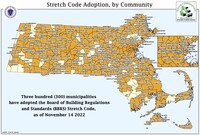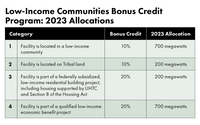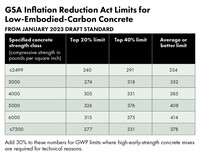Championing the
Changemakers
BuildingGreen champions the changemakers in sustainable design and building, with trusted insight, unparalleled education, and communities that are transforming the industry.
Log in to your profile

Image: Piranka

News Analysis
Building professionals advocating for stricter local requirements can learn from the innovative stretch energy codes in Massachusetts.
Working one-on-one with clients to help a building perform well on environmental, health, and social criteria is what gets many design and construction professionals out of bed in the morning.
Convincing politicians and civil servants that they should make those criteria a matter of law, and then... Read more
Product Review
Urban Machine developed a machine that can de-nail salvaged wood for reuse onsite.
Demolition activities in the U.S. create 37 million tons of wood debris each year, with the vast majority ending up in landfill, according to a 2018 report from the U.S. Environmental Protection Agency (EPA). Harvesting and processing virgin timber can be energy and water intensive, can cause forest degradation, and comes with unknown levels of... Read more
Feature
Advancements in low-carbon concrete materials and strategies have led to greater adoption in much of the U.S. Now it's time to start using them.
There are few materials that are as ubiquitous as concrete—or that cause as much environmental consternation. Concrete is one of the construction industry’s largest carbon emitters, responsible for about 5% to 8% of the world’s anthropogenic greenhouse gas emissions, yet it is also one of the most important building materials, used in even the... Read more
News Brief
A set of core principles and assessment guidelines from the Integrity Council aim to help purchasers identify “high-quality” carbon credits.
Carbon credits have become ubiquitous. Building owners have long been able to purchase offsets to make up for onsite energy use (as incentivized in LEED) or embodied carbon (as required by the Living Building Challenge). But now even everyday passengers can pay an extra dollar or two to make up for the emissions of an airplane... Read more
April Fools
Pink hydrogen made using nuclear energy will provide the power of tomorrow, fueling everything from robot warehouses to flying cars.
Hydrogen, the most abundant element in the universe. And nuclear furnaces, like those that power our sun. Put them together and they have the potential to drive industry, fuel transportation, and provide energy to the factories and skyscrapers of tomorrow.
How could this be? you ask. Here on Earth?
... Read moreApril Fools
After complaints about rejected credits and failed certifications, BuildingGreen took action.
BuildingGreen will be changing the name of its LEED certification project tool, LEEDuser.com, to the more apt FOLLOWuser.com.
“One of our core values at BuildingGreen is transparency,” said BuildingGreen founder Alex Wilson, “so we believe it makes the most sense to highlight that professionals building with LEED... Read more
April Fools
The latest Intergovernmental Panel on Climate Change’s report outlines some of the significant impacts of current and future carbon outputs. What do Americans think?
The Intergovernmental Panel on Climate Change’s (IPCC) Sixth Assessment Report (AR6) on climate impacts is the culmination of eight years of research from hundreds of scientists across the globe. The most recent synthesis report outlines the significant consequences of rising greenhouse gas emissions, which include flooding, droughts... Read more
April Fools
The new tool OpenAI-Architect proves problematic with the design of the new Leave It to Beaver Center at Disney World.
Everything started out all right. The state oversight board for Disney World was thrilled at how much money they would save by using OpenAI-Architect in the design of their new Leave It to Beaver Interpretive Center in Orlando.
“We thought it was a no-brainer,” noted Remington DeSantis, the recently appointed... Read more
April Fools
USGBC adds psychedelic Integrative Process prerequisites designed to be a paradigm-shifting expansion of LEED.
“Integrative process begins at home,” quipped Elroy “Ty” Hamit, senior vice president for social transformation and development, kicking off a surprise webinar Friday night during which the U.S. Green Building Council (USGBC) introduced two groundbreaking Integrative Process prerequisites for LEED v4.20. The new requirements, titled... Read more
Feature
Four tax provisions could be used to include disadvantaged communities in the clean energy transition, but equity outcomes are unclear.
This article has been prepared for informational purposes only; it is not intended to provide, and should not be relied on for, tax, legal, or accounting advice. You should consult your firm’s tax, legal, and accounting advisors before engaging in any transaction.
As our climate changes, it is becoming increasingly clear that our homes... Read more
Webcast
Why is ESG relevant to building industry professionals? Many of us are accustomed to sustainability programs and reporting. In this one-hour deep dive, we tap leading ESG experts for answers to burning questions many of us in the industry have about the intersection between ESG goals and the sustainability work we’ve been doing all... Read more
News Brief
The U.S. General Services Administration (GSA) is establishing thresholds for concrete and other high-embodied-carbon building materials.
As part of the Federal Buy Clean Initiative, the U.S. government has committed to reducing the greenhouse gas emissions from the manufacture and use of most construction materials. That mandate now has funding through the Inflation Reduction Act (IRA), so the General Services Administration (GSA) has to figure out how to... Read more
News Brief
Electrification of HVAC systems in schools could improve student health and learning outcomes while fighting climate change.
Schools across the country are aging and suffering from underinvestment—and so are their HVAC systems. Outdated and inadequate HVAC systems negatively affect indoor environmental quality (IEQ), contribute to community pollution, and leave schools even more vulnerable to the effects (and costs) of climate change and disease, according to the... Read more
News Brief
Four federal agencies have released a first-of-its-kind, holistic strategy for the decarbonization of the U.S. transportation sector.
Four federal agencies recently committed to work together to decarbonize the U.S. transportation sector, the country’s largest source of emissions, by 2050. The departments of Transportation, Energy, and Housing and Urban Development, along with the Environmental Protection Agency, signed a memorandum of understanding (MOU) in September 2022,... Read more
News Brief
A train derailment released toxic vinyl chloride in Ohio, and due to forced labor concerns, U.S. Customs has stopped the import of PVC products from the Xinjiang Uyghur Autonomous Region of China, a major supplier of vinyl flooring.
PVC’s already tainted health, environmental, and social justice record took two major hits this past month. First, PVC products were added to the Uyghur Forced Labor Prevention Act (UFLPA) list that is intended to prevent U.S. imports of products from the Xinjiang Uyghur Autonomous Region (XUAR) in China that are “mined, produced, or... Read more
Webcast
Hot spots: they might sound like fun places to hang out and have a drink—but in green building, they’re actually a bad thing. Something you track down so you can get rid of it. Kind of like being an environmentalist bounty hunter.
Life-cycle assessment (LCA) is a way of understanding the environmental impacts of... Read more
Blog Post
With a new procurement program, Google adopted comprehensive sustainability requirements for modular carpet tile that raise the bar for major manufacturers.
When it comes to sustainability, modular carpet is a surprisingly complicated product. It’s made with a range of different backings and face fibers and various other compounds that might be added as filler, surface treatments, antimicrobials, and more. Setting a bar that optimizes for climate, health, and circularity is... Read more
News Brief
A federal building performance standard addresses existing buildings, while DOE is targeting new construction.
Describing the U.S. government as “the country’s single largest energy consumer and building manager,” the White House has announced two programs aimed at decarbonizing the federal building portfolio. One covers existing building operations, and the other effectively requires electrification of new construction and major renovations.
... Read more
News Brief
IRA Guidebook releases new details on eligible projects and resilience measures for buildings.
This article has been prepared for informational purposes only; it is not intended to provide, and should not be relied on for, tax, legal, or accounting advice. You should consult your firm’s tax, legal, and accounting advisors before engaging in any transaction.
Money from the 2022 climate law is now available for high-performance... Read more
News Brief
Submit a comment to help the federal government put a stop to corporate greenwashing.
Frustrated by deceptive environmental marketing claims? Have insight that could help companies improve the clarity of sustainability declarations in their advertising, packaging, or labels? The U.S. Federal Trade Commission (FTC) wants to hear from you. On December 14, 2022, the FTC opened a 60-day public comment period for its “Green Guides... Read more
















